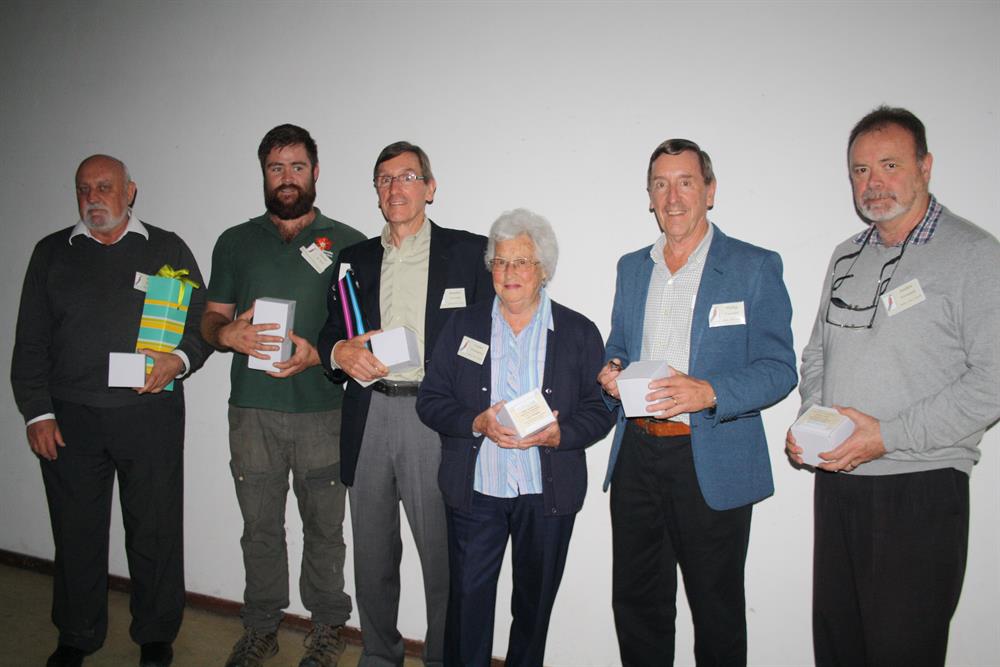During a historic occasion, his important work his during 1814 April to October visit was honoured at a Bicentenary Commemoration on Friday, during which his smiling bust was unveiled at the Garden Route Botanical Garden (GRBG).
The event was attended by 120 people including local historians, who were intrigued at how prolific Burchell was in sending off about 10 000 botanical specimens and hundreds of insects, birds and other animals. This was during his six month stay in the GRBG where he had set up camp with his ox wagon.
The lonely bachelor was hosted to a dinner by the local magistrate and founder of George Adriaan van Kervel, and this would have been welcome intellectual company. He was a renowned linguist and he immediately learnt some local languages in South Africa. Many of these specimens are conserved in the British Museum, Kew Gardens, London, and at the Oxford University in England and most of his 200 paintings are in South Africa.
The bust, sculpted and donated by Francois de Wet (father of the GRBG Manager Dayne de Wet), was designed by Knysna Architect André Vercueil and built by Mark van Rensburg. Zoologist Stanley Caveney and Clinical Physiologist Dr Roger Stewart, who both spoke at the gathering, officiated by unveiling the bust. Burchell's Garden Route journey included the most challenging terrain of his trek. He was the first traveller to negotiate wagons from the Langkloof to Plettenberg Bay; his map was also the first to chart in detail the ox wagon road from the Langkloof to Mossel Bay.
George historian, co-organiser of the event Lynne Thompson said, "After his trek, Burchell concluded with profound comments that were prescient of the concept of holism and environmentalism and that are, therefore, still widely relevant: We often remain ignorant of the proportions and perfect symmetry of the whole system of nature: in the wide system of created objects, nothing is wanting, nothing is superfluous: the smallest weed or insect is as indispensably necessary to the general good, as the largest object we behold."
Burchell's Coucal
Animals that were named after him include four birds: the starling, sandgrouse, courser and coucal. Also the red fin fish and the zebra. In November 1810, Burchell arrived in Cape Town and, in mid-1811, he set off on a four-year, 7 000km journey of scientific exploration. When he returned to Cape Town in April 1815, he had amassed 63 000 specimens and 500 drawings.
Polymath
In the South African Journal of Science Roger Stewart wrote, "Burchell is remembered mainly for his contributions to descriptive and philosophical aspects of natural history of the country. He is less well known for some significant and novel contributions to the earth sciences, the social sciences and even astronomy. Burchell's observations in physical geography and geology and his contribution to cartography have received little attention.
"Thompson reminded readers that special souvenir William Burchell Bicentenary Commemoration mugs are available from the George Heritage Trust. She can be contacted on 044 871 3814.

The Bicentary Commemoration for William Burchell was organised by five organisations. The role players in the historic ceremony are, from left: Physiologist Dr Roger Stewart, Dayne de Wet (GRBG manager), Zoologist Stanley Caveney (who paid tribute to Burchell), Lynne Thompson (one of the organisers), Phiilip Caveney, (chairman of the Knysna Historical Society) and André Vercueil Knysna (architect who designed the plinth).
ARTICLE: PAULINE LOURENS, GEORGE HERALD JOURNALIST
'We bring you the latest George, Garden Route news'
















